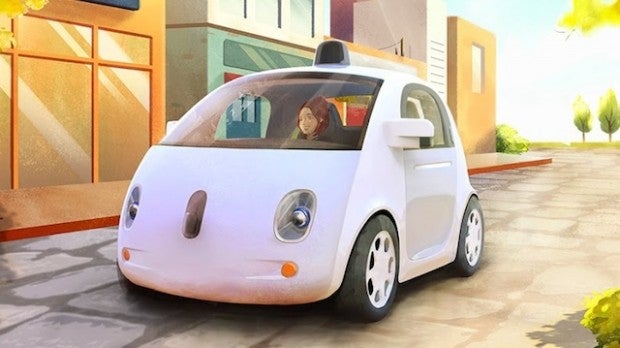Google’s self-driving cars are hitting public roads this summer

Google has announced that a number of its prototype self-driving cars will hit public roads this summer.
No exact dates have yet been revealed, but the company says its vehicles will be unleashed upon the roads of Mountain View, California – the area of its headquarters – within a matter of months.
“Now we’re announcing the next step for our project,” wrote Chris Urmson, the director of the Google self-driving car project in a blog post. “This summer, a few of the prototype vehicles we’ve created will leave the test track and hit the familiar roads of Mountain View, Calif., with our safety drivers aboard.”
That’s right, the cars will come with their own dedicated safety drivers, as well as a removable steering wheel, accelerator pedal, and brake pedal, which will allow them to take control of the vehicle if necessary.
That’s not to say that Google’s concerned about its cars’ safety credentials. Quite the opposite, in fact.
“The new prototypes will drive with the same software that our existing fleet of self-driving Lexus RX450h SUVs uses,” continued Urmson. “That fleet has logged nearly a million autonomous miles on the roads since we started the project, and recently has been self-driving about 10,000 miles a week.
“So the new prototypes already have lots of experience to draw on—in fact, it’s the equivalent of about 75 years of typical American adult driving experience.”
The self-driving cars will be capped at 25mph and, according to Urmson, will help reduce the number of accidents caused by human error. Google also says its cars will “transform mobility for millions of people” by easing congestion and enabling people who can’t drive to get around.
Earlier this week, it emerged that Google’s prototype fleet has been in 11 incidents during testing, though Urmson was quick to distance the firm from any blame, claiming that other drivers were responsible in each and every case.
SEE ALSO: Google says self-driving cars have never caused an accident
Meanwhile, Google has admitted that it hasn’t quite nailed the formula, and says it’s excited about learning how people interact with its cars, and solving some of the challenges relating to a self-driving vehicle, such as where it would stop if the spot as its exact destination was already occupied.


